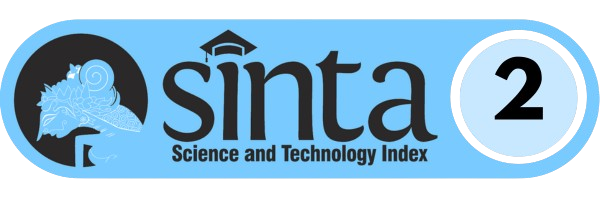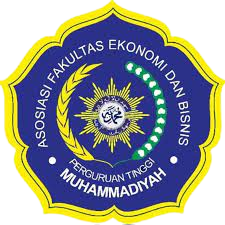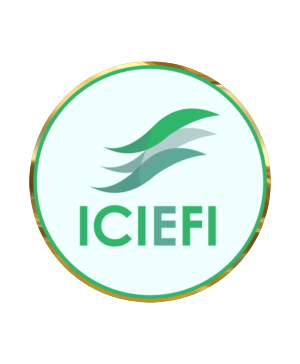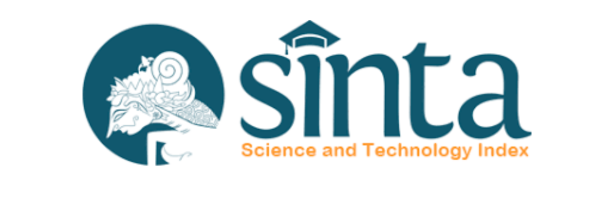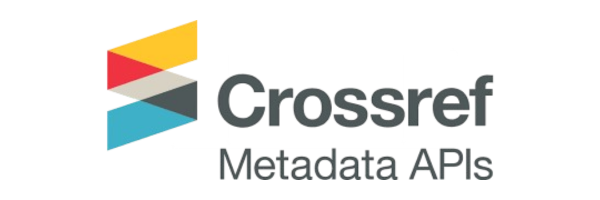Finding the Characteristics of Creative People in Developing Villages for the Foundation of Creative Industry
DOI:
https://doi.org/10.24269/ekuilibrium.v16i1.2021.pp64-84Abstract Every element of the community in the village should participate to optimize the potency that the village has. The village in Kuala Betara sub-district have marine resources, agriculture and plantation. Even with all of that benefit, if there is no support from creative human resources, it must be difficult for the village to create creative industry. Small and medium industry entrepreneurs have been utilizing the natural wealth of the village as the raw material of their production but they face obstacles in managing it due to their limited skills that are acquired self-taught and passed on from generation to generation, limited capital, unsophisticated production and packaging tools, limited market access due to limited production and the market is conventional only, including being not optimal in involving youth who are better in information technology. Meanwhile, the information about creative products can be easily obtained through internet. In addition, the youth also have not optimized the usage of internet as the media to collect creative ideas that will be useful in developing products of small and medium industry in the village. Besides, this industry can be a platform for youth to increase the quality through creativity. The method used in this research is survey with descriptive analysis. The result shows that the creativity of small and medium industry entrepreneurs and youth is in average level. Started from the main characteristics of creative people, possible characteristic of creative people, and side characteristic of creative people. . Even so, it is found that there are three entrepreneurs of small and medium industry and 42 youth who are belong to high level of creative people. These kind of people are the main and valuable assets to collaborate and becoming the foundation of creative industry in village.Â
References
Badan Pusat Statistik (BPS). 2019. Kabupaten Tanjung Jabung Barat dalam Angka. Badan Pusat Statistik Kabupaten Tanjung Jabung Barat.
Badan Pusat Statistik (BPS). 2020. Kecamatan Kuala Betara dalam Angka. Badan Pusat Statistik Kabupaten Tanjung Jabung Barat.
Campbell, D. 2012. Mengembangkan Kreativitas. A. M. Mangunhardjana, penerjemah. (Cetakan 19). Yogyakarta: Kanisius. Terjemahan dari: Take The Road To Creativity And Get Off Your Dead End.
Dinas Koperasi Usaha Kecil Menengah, Perindustrian dan Perdagangan. Data Base UKM. 2019. Rencana Data Perkembangan UMKM Kabupaten Tanjung Jabung Barat. Kabupaten Tanjung Jabung Barat
Dinas Pemberdayaan Masyarakat dan Desa (PMD). 2020. Penetapan Hasil Pengukuran Indeks Desa Membangun (IDM) di Kabupaten Tanjung Jabung Barat Tahun 2020. Kabupaten Tanjung Jabung Barat
Fauzan, A. (2016, July). Pengembangan Ekonomi Kreatif Lokal Desa Tumang dengan Pendekatan Komunikasi Visual untuk Menghadapi Masyarakat Ekonomi ASEAN. In Prosiding Seminar Nasional Indocompa.
Gunawan, Y., & Permadi, A. (2015) Strategi Pengembangan Industri Kecil Carica. JEJAK Journal of Economics and Policy Semarang State University, 8(1), 45-53.
Indrawijaya, S., Machpudin, A., & Dahmiri, D. (2018). Upaya Pemberdayaan Industri Kecil dan Menengah dalam Rangka Pengembangan Usaha. Jurnal Manajemen Terapan dan Keuangan, 7(01), 54-67.
Istriyani, R. (2015). Kontribusi Pemuda dalam Menjawab Permasalahan Sosial Ekonomi Pascabencana. Jurnal Studi Pemuda, 4(2), 315-329.
Kartika. R. S.. (2013). Peluang Mengembangkan Kewirausahaan Desa Berbasis Potensi Desa (Studi Deskriptif di Desa Karang Rejo Kecamatan Negeri Katon Kabupaten Pesawaran, Kampung Suka Jawa Kecamatan Bumi Ratu Kabupaten Lampung Tengah dan Desa Sidoasri Kecamatan Candi Puro Kabupaten Lampung Selatan Propinsi Lampung). Jurnal Bina Praja: Journal of Home Affairs Governance, 5(4), 281 – 300.
__________ (2015). Partisipasi Masyarakat dalam Mengelola Alokasi Dana Desa (ADD) di Desa Tegeswetan dan Desa Jangkrikan Kecamatan Kepil Kabupaten Wonosobo. Jurnal Bina Praja: Journal of Home Affairs Governance, 4(3), 179-188.
Krejcie, R, V, & Morgan, D, W.1970. Determining Sampel Size for Research Activities. Aducational and Psyicological Measurement.
Kusumo, O., & Puspitasari, D. C. Potret dan Dinamika Wirausaha Muda Kreatif Kaliabu. Jurnal Studi Pemuda, 6(2), 636-650.
Manik, J. R. (2016). Analisis Peran Pemuda Sarjana Penggerak Pembangunan di Pedesaan (PSP3) terhadap Pembangunan Desa di Kabupaten. Jurnal Ekonomi, 21(2), 290-308.
Munandar, U. 2009. Pengembangan Kreativitas Anak Berbakat (Cetakan 3). Jakarta: Rineka Cipta.
Nawarini, A. T., Widiastuti, E., Sulistyandari, S., & Indriati, S. (2018). Increasing the Business Performance Over Human Capital Contribution on Creative Industry in Banyumas Regency. Ekuilibrium: Jurnal Ilmiah Bidang Ilmu Ekonomi, 13(1), 11-25.
Nuryanti, S., Lena, B. & Nurjaman, J. (2018). Pengaruh Kreativitas terhadap Daya Saing Usaha. AdBispreneur: Jurnal Pemikiran dan Penelitian Administrasi Bisnis dan Kewirausahaan, 2(3), 255-262.
Prathivi, G. M. D. (2020). Digital Marketing and Indonesia’s Youth Entrepreneurs’ Business. Jurnal Aplikasi Manajemen Universitas Brawijaya, 18(1), 86–94.
Purnomo, R. A. (2016). Analisis Statistik Ekonomi dan Bisnis dengan SPSS. CV. WADE GROUP bekerjasama dengan UNMUH Ponorogo Press.
Rahmah, D. M. (2016). Analisis Efektifitas Pendekatan Human Center Design dalam Pengembangan Industri Kecil Menengah di Kawasan Pedesaan. Agricore: Jurnal Agribisnis dan Sosial Ekonomi Pertanian Universitas Padjadjaran, 1(1), 27-32.
Ratnawati. (2019). Partnership Strategy and Competitive Advantage to Improve the Performance of MSMEs In the Creative Industry. Jurnal Aplikasi Manajemen Universitas Brawijaya, 17(4), 668–676.
Ridwan, R., & Surya, C. (2018). Pemberdayaan Masyarakat Desa Dalam Mengembangkan Ekonomi Kreatif di Desa Citengah Kabupaten Sumedang. Jurnal Riset Akuntansi Kontemporer, 10(1), 28-33.
Saksono, H. (2013). Ekonomi Kreatif: Talenta Baru Pemicu Daya Saing Daerah. Jurnal Bina Praja: Journal of Home Affairs Governance,4(2), 93-104.
Sidharta, H., Azizi, N., Suryasaputra, S., & Rahman, A. (2017) . Framework Intrepreneurial Success for Young Entrepreneur. Jurnal Aplikasi Manajemen, Universitas Brawijaya, 15(4), 553-562
Suharyanto, S., & Sofianto, A. (2012). Model Pembangunan Desa Terpadu Inovatif di Jawa Tengah. Jurnal Bina Praja: Journal of Home Affairs Governance, 4(4), 251-260.
Sujoko, A., & Fatanti, M. (2017). Let’s Start Your Own Vlog Promoting Indonesian Digital Entrepreneur using Youtube Channel. Jurnal Aplikasi Manajemen Universitas Brawijaya, 15(4), 579-586
Syamsuddin, M. P. (2019). Pemuda sebagai Fasilitator Pendamping Desa. Journal of Millennial Community, 1(2), 37-44.
Downloads
Published
How to Cite
Issue
Section
License
Retained Rights/Terms and Conditions of Publication
1. As an author you (or your employer or institution) may do the following:
- make copies (print or electronic) of the article for your own personal use, including for your own classroom teaching use;
- make copies and distribute such copies (including through e-mail) of the article to research colleagues, for the personal use by such colleagues (but not commercially or systematically, e.g. via an e-mail list or list server);
- present the article at a meeting or conference and to distribute copies of the article to the delegates attending such meeting;
- for your employer, if the article is a ‘work for hire’, made within the scope of your employment, your employer may use all or part of the information in the article for other intra-company use (e.g. training);
- retain patent and trademark rights and rights to any process, procedure, or article of manufacture described in the article;
- include the article in full or in part in a thesis or dissertation (provided that this is not to be published commercially);
- use the article or any part thereof in a printed compilation of your works, such as collected writings or lecture notes (subsequent to publication of the article in the journal); and prepare other derivative works, to extend the article into book-length form, or to otherwise re-use portions or excerpts in other works, with full acknowledgement of its original publication in the journal;
- may reproduce or authorize others to reproduce the article, material extracted from the article, or derivative works for the author's personal use or for company use, provided that the source and the copyright notice are indicated, the copies are not used in any way that implies RCEPM-LIPI endorsement of a product or service of any employer, and the copies themselves are not offered for sale.
All copies, print or electronic, or other use of the paper or article must include the appropriate bibliographic citation for the article's publication in the journal.
2. Requests from third parties
Although authors are permitted to re-use all or portions of the article in other works, this does not include granting third-party requests for reprinting, republishing, or other types of re-use. Requests for all uses not included above, including the authorization of third parties to reproduce or otherwise use all or part of the article.
3. Author Online Use
- Personal Servers. Authors and/or their employers shall have the right to post the accepted version of articles pre-print version of the article, or revised personal version of the final text of the article (to reflect changes made in the peer review and editing process) on their own personal servers or the servers of their institutions or employers without permission from Universitas Muhamamdiyah Ponorogo, provided that the posted version includes a prominently displayed Universitas Muhamamdiyah Ponorogo copyright notice and, when published, a full citation to the original publication, including a link to the article abstract in the journal homepage. Authors shall not post the final, published versions of their papers;
- Classroom or Internal Training Use. An author is expressly permitted to post any portion of the accepted version of his/her own articles on the author's personal web site or the servers of the author's institution or company in connection with the author's teaching, training, or work responsibilities, provided that the appropriate copyright, credit, and reuse notices appear prominently with the posted material. Examples of permitted uses are lecture materials, course packs, e-reserves, conference presentations, or in-house training courses;
- Electronic Preprints. Before submitting an article to an Ekuilibrium: Jurnal Ilmiah Bidang Ilmu Ekonomi, authors frequently post their manuscripts to their own web site, their employer's site, or to another server that invites constructive comment from colleagues. Upon submission of an article to Ekuilibrium: Jurnal Ilmiah Bidang Ilmu Ekonomi, an author is required to transfer copyright in the article to Economy Faculty Universitas Muhammadiyah Ponorogo, and the author must update any previously posted version of the article with a prominently displayed Economy Faculty Universitas Muhammadiyah Ponorogo copyright notice. Upon publication of an article by the Universitas Muhammadiyah Ponorogo, the author must replace any previously posted electronic versions of the article with either (1) the full citation to the work with a Digital Object Identifier (DOI) or link to the article abstract in Ekuilibrium: Jurnal Ilmiah Bidang Ilmu Ekonomi journal homepage, or (2) the accepted version only (not the final, published version), including the Economy Faculty Universitas Muhammadiyah Ponorogo copyright notice and full citation, with a link to the final, published article in journal homepage.
4. Articles in Press (AiP) service
Economy Faculty Universitas Muhammadiyah Ponorogo may choose to publish an abstract or portions of the paper before we publish it in the journal. Please contact our Production department immediately if you do not want us to make any such prior publication for any reason, including disclosure of a patentable invention.
5. Author/Employer Rights
If you are employed and prepared the article on a subject within the scope of your employment, the copyright in the article belongs to your employer as a work-for-hire. In that case, Economy Faculty Universitas Muhammadiyah Ponorogo assumes that when you sign this Form, you are authorized to do so by your employer and that your employer has consented to the transfer of copyright, to the representation and warranty of publication rights, and to all other terms and conditions of this Form. If such authorization and consent has not been given to you, an authorized representative of your employer should sign this Form as the Author.
6. RCEPM-LIPI Copyright Ownership
It is the formal policy of Economy Faculty Universitas Muhammadiyah Ponorogo to own the copyrights to all copyrightable material in its technical publications and to the individual contributions contained therein, in order to protect the interests of the Economy Faculty Universitas Muhammadiyah Ponorogo, its authors and their employers, and, at the same time, to facilitate the appropriate re-use of this material by others. Economy Faculty Universitas Muhammadiyah Ponorogo distributes its technical publications throughout the world and does so by various means such as hard copy, microfiche, microfilm, and electronic media. It also abstracts and may translate its publications, and articles contained therein, for inclusion in various compendiums, collective works, databases and similar publication.
7. Licensing Terms
Ekuilibrium is licensed under a Creative Commons Attribution-ShareAlike 4.0 International License.
Permissions beyond the scope of this license may be available at https://journal.umpo.ac.id/


